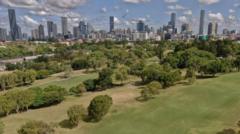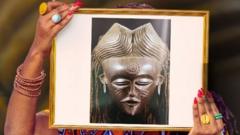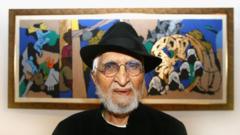As the Parsi community in India faces dwindling numbers, the newly-renovated Alpaiwalla Museum in Mumbai presents a comprehensive collection of artifacts and traditions, highlighting their significant contributions and cultural heritage.
Revitalizing Heritage: A Glimpse into India's Parsi Community at Mumbai's Alpaiwalla Museum

Revitalizing Heritage: A Glimpse into India's Parsi Community at Mumbai's Alpaiwalla Museum
The Framji Dadabhoy Alpaiwalla Museum sheds light on the ancient Parsi culture, showcasing unique artifacts and rich history amidst a declining population.
Nestled in a quiet lane in Mumbai's southern district, the Framji Dadabhoy Alpaiwalla Museum stands as a beacon of the Parsi community, a group tracing their roots to Zoroastrianism, one of the world's oldest religions. With an estimated population of merely 50,000 to 60,000, the Parsis, descendants of Persian refugees fleeing religious persecution centuries ago, are losing their numbers but not their cultural significance.
Curator Kerman Fatakia emphasizes the museum’s role in illuminating the Parsi community's history and traditions. This recently refurbished museum features an array of rare artifacts, including cuneiform bricks, terracotta pots, and coins dating back to 4000-5000 BCE, originating from historic cities such as Babylon and Mesopotamia, where Zoroastrian kings once reigned.
Among the impressive displays is a replica of the renowned "Cyrus Cylinder," attributed to Cyrus the Great, the founder of the Achaemenid Empire. This ancient artifact is regarded as one of the earliest declarations of human rights, with a copy housed at the United Nations. The museum also illustrates the migration paths taken by Iranian Zoroastrians fleeing persecution, showcasing maps and documents that speak to over a thousand years of resilience.
Notably, the museum's collection includes artifacts contributed by prosperous Parsis involved in trade during the 19th century, many items reflecting a blend of global influences. Traditional Parsi sarees, adorned with inspirations from China and France, are a testament to this vibrant community's intercultural exchanges.
Among the most impactful exhibits is a life-sized replica of a Tower of Silence (dakhma), where Parsis traditionally place their dead, and a fire temple, a sacred space typically closed to non-Parsis. These installations offer unique insights into the spiritual practices of the Parsi people, inviting both curiosity and reverence.
Originally established in 1952, the Alpaiwalla Museum serves as a historical treasure trove for anyone interested in learning about the Parsi community's richness—cultivating understanding and appreciation for a culture that, while dwindling, continues to contribute indelibly to India’s social and cultural fabric.




















